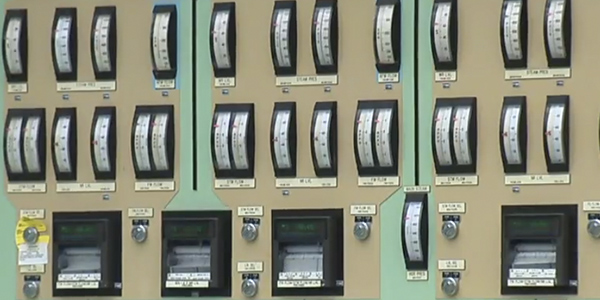By Michael Kuser
Dominion Energy has inched closer to the finish line in a two-year marathon to win state-subsidized energy contracts for its Millstone nuclear plant in Connecticut.
The state’s Public Utilities Regulatory Authority issued a draft decision Nov. 16 (Case 18-05-04) categorizing the 2,111-MW plant as “an existing resource at risk for retirement” without ratepayer support, which would allow it to qualify for special consideration in the state’s solicitation for up to 12 million MWh of zero-carbon electric power. Resources deemed to be at risk have their bids considered in terms of environmental and grid reliability benefits, as well as price.

Millstone’s retirement would not trigger need for new capacity in Connecticut, but it would for new generation capacity in New England as a whole. | Dominion Energy
The PURA said it will accept comments on the draft decision until Nov. 27, hear oral arguments at its headquarters on Dec. 21 and likely issue a final decision Jan. 2, 2019. The plant in Waterford, on Long Island Sound, supplies approximately 45% of the state’s electricity.
ClearView Energy Partners estimates a 75% probability that state regulators will include Millstone’s capacity in its zero-carbon procurements, likely limiting the award to no more than half the plant’s annual generation.
Ken Holt, Millstone’s communications manager, told RTO Insider that the PURA had been given access to the company’s confidential information, done its own analysis and concluded that Millstone is at risk. He said Dominion is now focused on the zero-carbon procurement by the state’s Department of Energy and Environmental Protection.
“We made numerous offers that would both ensure Millstone’s continued operations and provide benefits to Connecticut ratepayers ranging from the hundreds of millions of dollars to billions of dollars,” Holt said.
Gimme Shelter
Dominion has been following the lead of Exelon, which secured state subsidies for its nuclear plants in Illinois and New York after their profit margins started slipping in competition against low-priced natural gas.
Last year Dominion sought similar legislation in Connecticut, but the General Assembly failed to pass it, prompting Gov. Dannel Malloy that year to order both the DEEP and PURA to assess the viability of the Millstone plant and determine whether the state should provide financial support.
The agencies in January issued a report on the current and projected economic viability of Millstone and signaled support for state procurement of its output under a program reserved for renewable resources such as large-scale hydropower, wind and solar. (See Conn. Regulators Signal Support for Millstone.)
Given the record of opposition to that move by consumer groups and non-renewable resource owners, it is not clear what new information the PURA expects to hear between now and January to justify its decision.

Millstone reactor unit | Dominion Energy
The DEEP last month issued its final determination on six projects selected for its January request for proposals for Class I renewable energy sources, including one offshore wind project, one anaerobic digestion project, three fuel cell projects and one fuel cell project with combined heat and power.
According to the department, the selected projects total 254 MW and 1,285,360 MWh/year, equal to 4.7% of the state’s load, with a levelized 2018 constant dollar load-weighted average price of $80.04/MWh for energy plus renewable energy credits.
Winners among the approximately 100 projects that responded to Connecticut’s zero-carbon RFP must enter power purchase agreements with either of the state’s two leading utilities, Eversource Energy and United Illuminating.
Class Act
In written comments filed with the PURA last year, Eversource contended that Millstone is neither a Class I, II nor III renewable resource and “cannot simultaneously be a competitive merchant generator and receive state-sponsored financial support.” The utility argued that any financial remedy “should be based on cost-of-service principles with correspondingly limited returns on equity to reflect the reduction in risk resulting from Millstone’s receipt of state financial support that is unavailable to other non-renewable merchant generators.”
Under Connecticut’s renewable portfolio standard, Class I represents resources such as solar, wind, geothermal, biogas, sustainable biomass, and wave or tidal power, as well as run-of-river hydropower facilities not exceeding 30 MW in capacity. Class II resources include trash-to-energy facilities that have obtained required permits, while Class III covers customer-side CHP systems, electricity conservation and load management programs, and systems that recover waste heat or pressure from commercial and industrial processes.
Emissions Costs
The DEEP’s analysis showed that while Millstone’s retirement would not trigger a need for new capacity in Connecticut specifically, it would for new generation capacity in New England as a whole. Replacement capacity procured through ISO-NE would likely be gas-fired, exacerbating security and system reliability issues because of the region’s heavy reliance on gas for power generation.
If Millstone’s two units stopped operating, CO2 emissions for the entire New England electric sector would increase by 80 million short tons, or 25%, through 2035, according to the department. Replacing at least 25% of Millstone’s output with hydropower, demand reduction, energy storage and zero-emission renewable energy would be necessary for Connecticut to achieve its statutory greenhouse gas emissions-reduction targets, costing the state’s ratepayers an estimated $1.8 billion, the department said.
Even with that investment, regional emissions would increase by 20%. Replacing 100% of Millstone’s output with zero-carbon resources would cost Connecticut ratepayers approximately $5.5 billion, the DEEP said.


